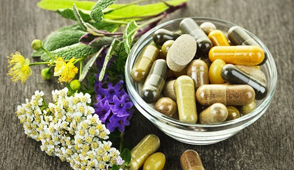
Ayurvedic formulations
The traditional Ayurvedic formulations are derived from nature and have little or no side effects. They act on cellular level leading to an overall physiological well being. Ayurveda is a science of life which treats the person as a whole and aims at delivery of the drug to the right part of the body. While making these formulations, herbs from the nature are boiled to extract and concentrate the essence which is called a decoction. This decoction is then mixed with a vehicle like water, ghee, milk, oil or alcohol. Though derived from nature, these formulations should not be ingested without proper safety and efficacy data.
Importance of Standardization of Herbal formulations
To ensure safety of the consumers; assessment of accurate therapeutic properties, toxicity, purity of the formulations, etc. is a must. An accepted level of standardization of the herbal drugs has to be met on different parameters.
As the source of these formulations comes from nature, there is a possibility of microbiological contamination, pesticide residue, foreign matter, etc in them. Various organoleptic properties, chemical composition, presence of heavy metals, moisture content, etc. has to be tested. Modern techniques like Spectrophotometric methods, Chromatography are used to establish authenticity of the formulation.
In case of herbal medicines, there is no uniformity across batches as there is variation in raw material depending on the soil, temperature of the region from where it is sourced, lack of any reference standard for identification, the storage conditions, etc.
Standardization of Ayurvedic drugs should begin from cultivation of medicinal plant, analysis in the laboratory, in vitro clinical trials up to the double blind clinicals. Compliance with internationally recognized WHO Guidelines on Standardization and Quality control of Herbal Drugs will ensure growth of herbal drug development. Research and Development
Natural products chemistry deals with new compounds from natural sources such as plants, animals, etc. Natural product research has yielded some in use drugs which are as follows:
• Aspirin - Analgesic is derived from the willow tree bark
• Penicillin - Antibiotic is derived from molds
Researchers are trying to find natural remedies from the deep seas, rainforests and also the Antarctic.
Natural products research and development includes the first generation natural products that are extracted from nature to study their structures, bioactivity. The secondary natural products are slightly modified derivatives of the first. e.g. Taxotere -Anticancer, Clarythromycin - Antibiotic. The third generation bioengineered products are designed to combat the drug resistance.
Future of Herbal Drugs
Herbal medicines are cost effective, low on toxicity, easy to administer and relatively safe due to lesser side effects compared to the modern medicines. With a projected high growth in the days to come herbal medicines have a bright future.



